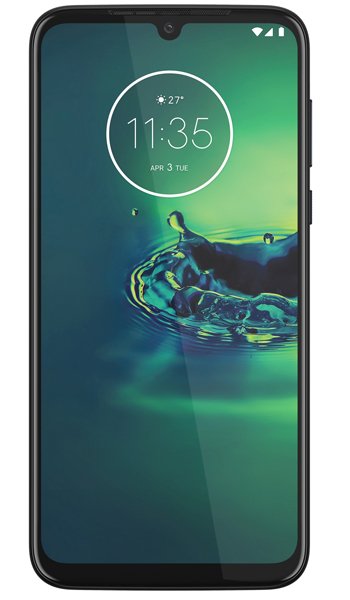Motorola Moto G8 Plus vs Oppo A9 (2020) Comparison and Differences
Smartphone 1

Motorola Moto G8 Plus
Smartphone 2
-397.jpg)
Oppo A9 (2020)
Smartphone 3
Motorola Moto G8 Plus or Oppo A9 (2020) Specs Comparison
or
 Common specs
Common specs
| Brand and model | Motorola Moto G8 Plus | Oppo A9 (2020) | |
| Rating | (+0) | (+0) | |
| Release date | 2019, October | 2019, September | |
| Dimensions (HxWxD) | 158.4 x 75.8 x 9.1 mm | 6.24 x 6.24 x 2.98 in | 163.6 x 75.6 x 9.1 mm | 6.44 x 6.44 x 2.98 in | |
| Weight | 188 g | 6.63 oz | 195 g | 6.88 oz | |
| Case | buy from Amazon | buy from Amazon | |
| Colors | Dark Blue, Dark Red | Marine Green, Space Purple | |
| Battery | 4000 mAh, Non-removable Li-Po | 5000 mAh, Non-removable Li-Po | |
| Approximate price | $270 | ||
| Check price | from Amazon | from Amazon |
 Screen
Screen
| Technology | LTPS IPS LCD | IPS LCD | |
| Touchscreen | capacitive touchscreen | capacitive touchscreen | |
| Display colors | 16M | 16M | |
| Screen size | 6.3" in | 6.5" in | |
| Screen area | 99.1 cm2 | 102.0 cm2 | |
| Screen format | 19:9 (height:width) | 20:9 (height:width) | |
| Screen to body ratio | 82.5% | 82.5% | |
| Screen resolution | 1080 x 2280 px | 720 x 1600 px | |
| Screen PPI /points per inch/ | 400 PPI | 270 PPI | |
| Screen protector | buy from Amazon | buy from Amazon |
 Camera and Video
Camera and Video
| Rear camera, main | 48 MP, Triple | 48 MP, Quad | |
| Camera specs | -48 MP, f/1.7, (wide), 1/2'', 0.8µm, PDAF, Laser AF -16 MP, f/2.2, 14mm (ultrawide), dedicated video camera (1080p) -5 MP, f/2.2, depth sensor |
-48 MP, f/1.8, (wide), 1/2.3'', 0.8µm, PDAF -8 MP, f/2.3, 13mm (ultrawide), 1/4'', 1.12µm, AF -2 MP, f/2.4, 1/5'', 1.75µm -2 MP, f/2.4, 1/5'', 1.75µm, depth sensor |
|
| Functions | LED flash, HDR, panorama | Dual-LED dual-tone flash, panorama, HDR | |
| Video | 2160p@30fps, 1080p@30/60/120fps | 2160p@30fps, 1080p@30fps, gyro-EIS | |
| Front camera, selfie | 25 MP, Single | 16 MP, Single | |
| Specifications | 25 MP, f/2.0, 0.9µm | 16 MP, f/2.0, 1/3.1'', 1.0µm | |
| Functions | HDR | HDR | |
| Video | 1080p@30/120fps | 1080p@30fps |
 Performance
Performance
| Operating system - OS | Android 9.0 (Pie) | Android 9.0 (Pie); ColorOS 6.1 | |
| Chipset | - Qualcomm SM6125 Snapdragon 665 (11 nm) | - Qualcomm SM6125 Snapdragon 665 (11 nm) | |
| CPU | - Octa-core (4x2.0 GHz Kryo 260 Gold & 4x1.8 GHz Kryo 260 Silver) | - Octa-core (4x2.0 GHz Kryo 260 Gold & 4x1.8 GHz Kryo 260 Silver) | |
| GPU | Adreno 610 | Adreno 610 | |
| External memory | microSD, up to 512 GB (uses shared SIM slot) | microSD, up to 256 GB (dedicated slot) | |
| Internal memory | 64GB 4GB RAM | 128GB 4GB RAM, 128GB 8GB RAM, UFS2.1 |
 Benchmark
Benchmark
| Antutu 8 Total | 172000 | ||
| Antutu 7 Total | |||
| GeekBench 5 Single Core | 314 | 394 | |
| GeekBench 5 Multi-Core | 1264 | 1375 |
 Communication and Connectivity
Communication and Connectivity
| SIM card | Single SIM (Nano-SIM) or Hybrid Dual SIM (Nano-SIM, dual stand-by) | Dual SIM (Nano-SIM, dual stand-by) | |
| Network | GSM / HSPA / LTE | GSM / HSPA / LTE | |
| Bands | -2G - GSM 850 / 900 / 1800 / 1900 - SIM 1 & SIM 2 -3G - HSDPA 850 / 900 / 1700(AWS) / 1900 / 2100 -4G - LTE band 1(2100), 2(1900), 3(1800), 4(1700/2100), 5(850), 7(2600), 8(900), 18(800), 19(800), 20(800), 26(850), 28(700) |
-2G - GSM 850 / 900 / 1800 / 1900 - SIM 1 & SIM 2 -3G - HSDPA 850 / 900 / 2100 -4G - LTE band 1(2100), 3(1800), 5(850), 8(900), 38(2600), 40(2300), 41(2500) |
|
| Speed | HSPA 42.2/5.76 Mbps, LTE-A 600/50 Mbps | HSPA, LTE-A | |
| GPRS | Yes | Yes | |
| Edge | Yes | Yes | |
| Wi-Fi | Wi-Fi 802.11 a/b/g/n/ac, dual-band, Wi-Fi Direct, hotspot | Wi-Fi 802.11 a/b/g/n/ac, dual-band, Wi-Fi Direct, hotspot | |
| GPS | Yes, with A-GPS, GLONASS, BDS, GALILEO | Yes, with A-GPS, GLONASS, GALILEO, BDS | |
| NFC | Yes (market dependent) | ||
| USB | 2.0, Type-C 1.0 reversible connector, USB On-The-Go | microUSB 2.0, USB On-The-Go | |
| Bluetooth | 5.0, A2DP, LE, aptX | 5.0, A2DP, LE |
 Music and Audio
Music and Audio
| Radio | FM radio | FM radio | |
| Headphone jack | Yes | Yes | |
| Others | - Active noise cancellation with dedicated mic -Dolby sound |
- 24-bit/192kHz audio -Dolby Atmos sound -Active noise cancellation with dedicated mic |
 Other features
Other features
| Sensors | - Fingerprint (rear-mounted), accelerometer, gyro, proximity, compass , Infrared port | - Fingerprint (rear-mounted), accelerometer, gyro, proximity, compass | |
| Other extras |
- Battery charging 15W - Splash resistant |
- Reverse charging |
Reviews and Opinions on Motorola Moto G8 Plus and Oppo A9 (2020)
If you had to recommend one of these phones to a friend, which one would it be and why? Share your arguments using the Add Opinion button!
